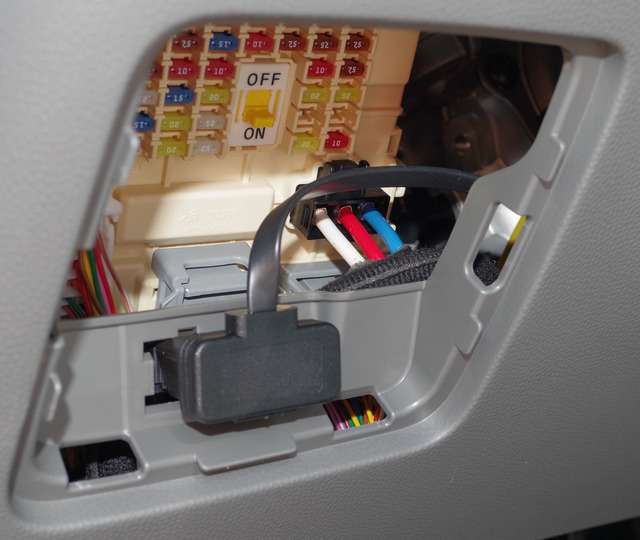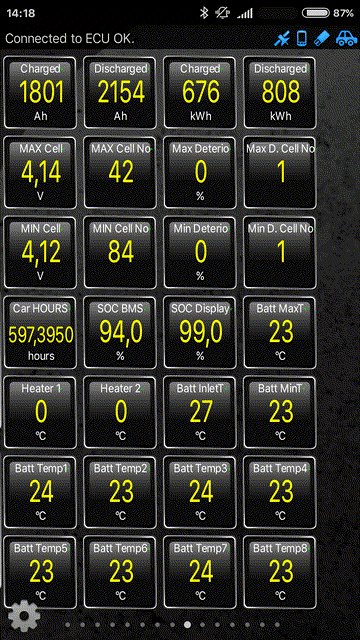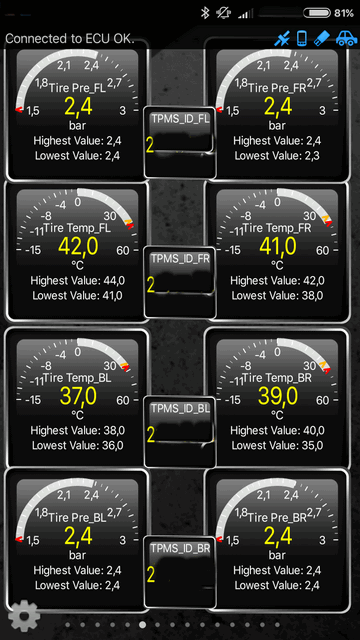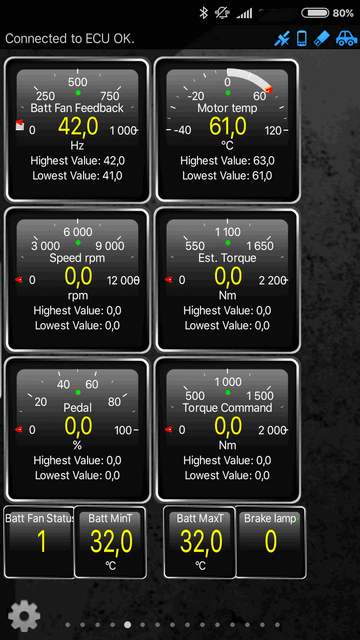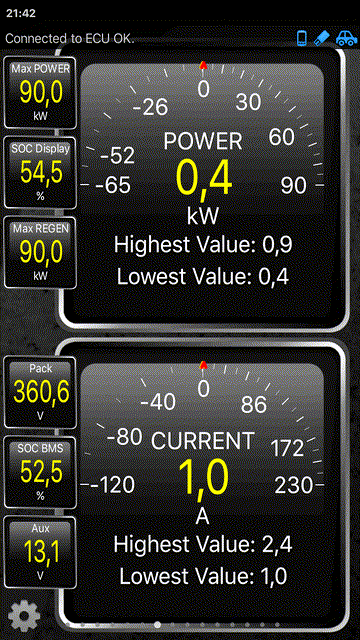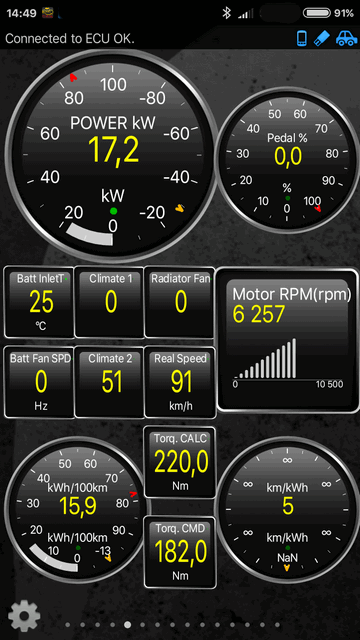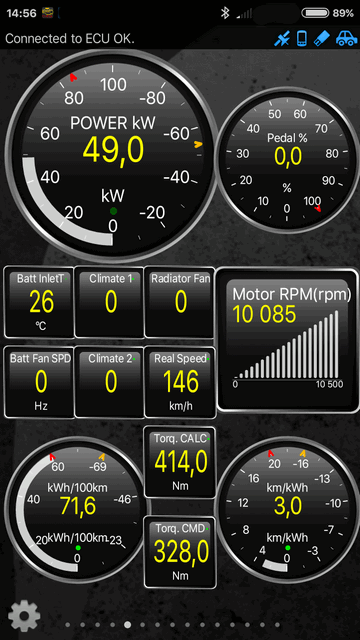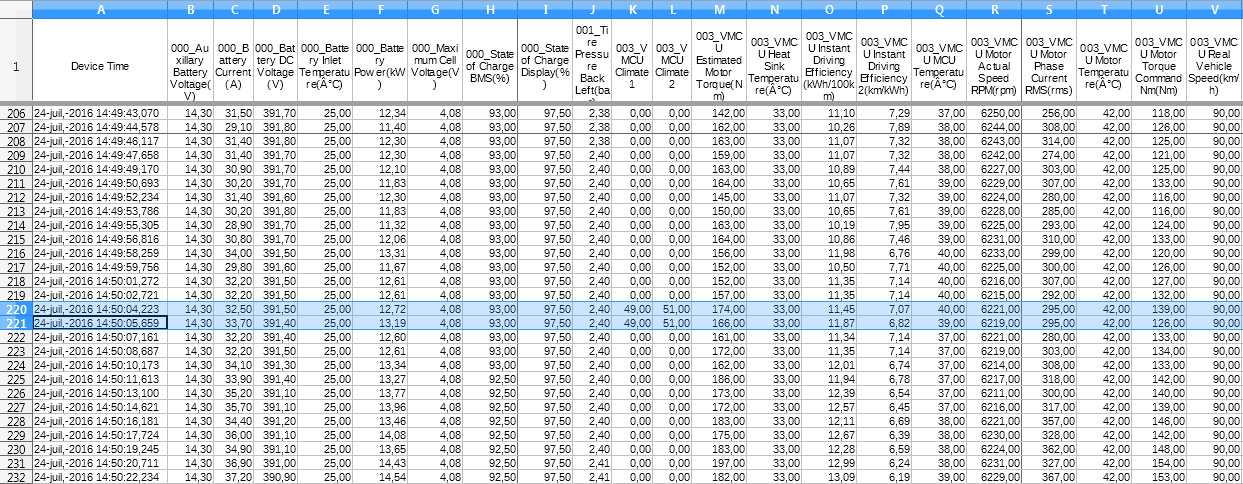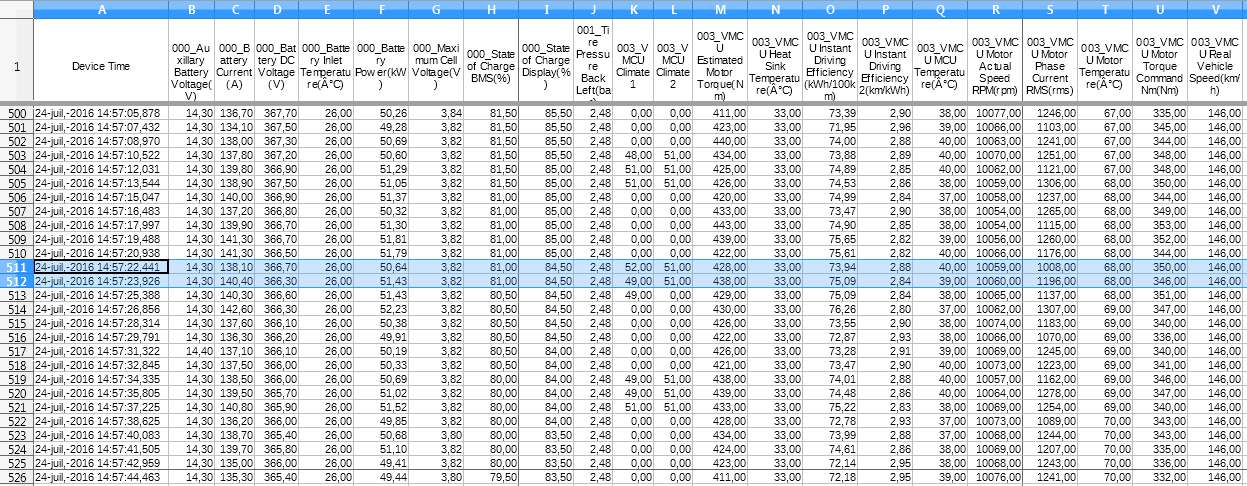Here's a photo of an American car displaying the wrongly labelled Energy Consumption figure just like my car.
It should say Energy Economy. The US has a 0 - 4 - 8 scale.
I watched it more carefully today. Driving at a steady speed - energy economy goes up when you go down a hill - and goes down when driving uphill.
On my dial marked 0 - 5 - 10 it was at 5 during my test and went up to 10 when going downhill.
It also goes to 10 whenever I do regen braking.
Energy Consumption as used (and labelled correctly) in Europe is the inverse of this behaviour.
Am curious to know what scale is used in Canada and the UK for this screen.
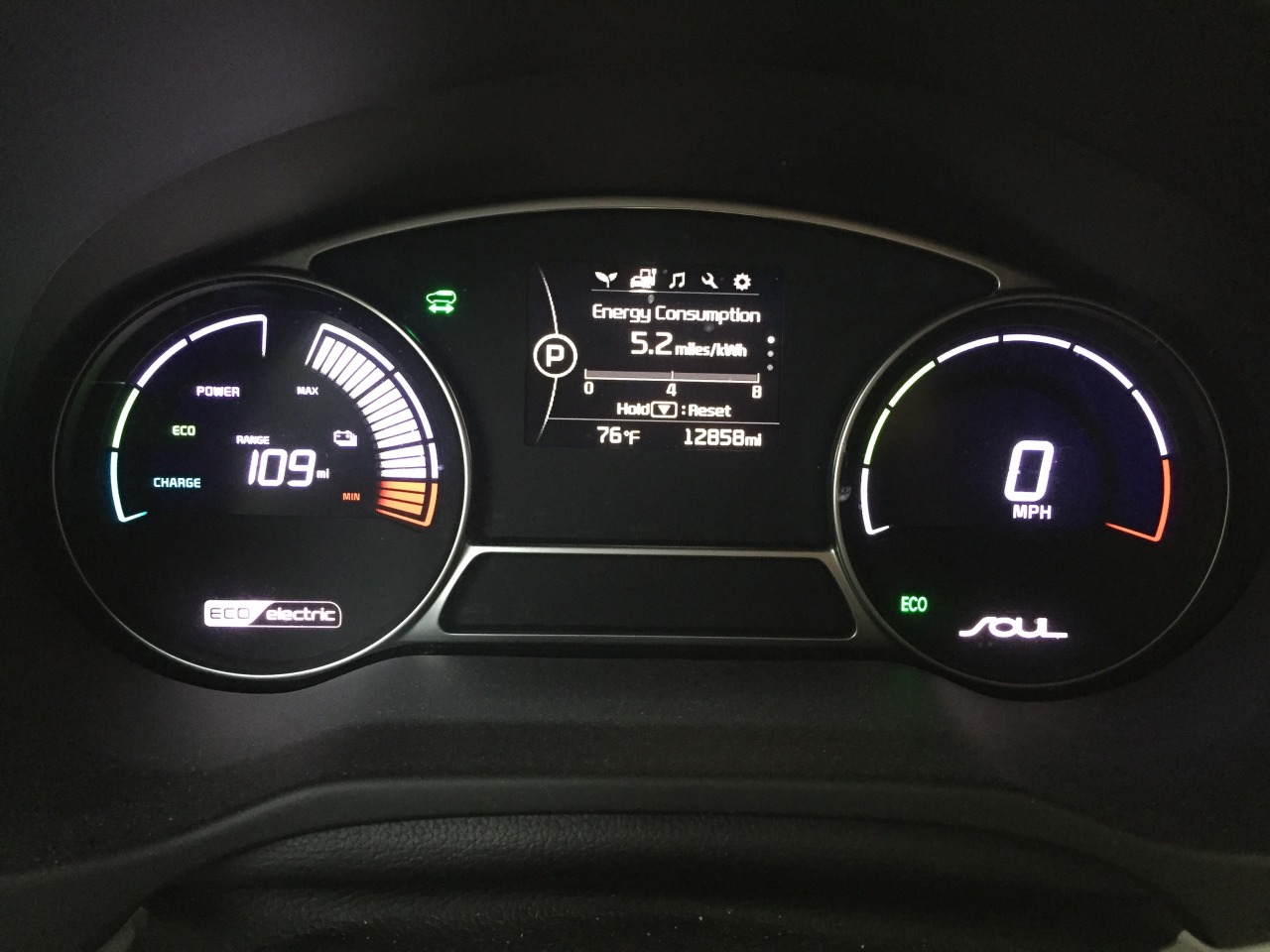
And getting back to the original question.
Assuming we can get the theory right first I hope we can then work out why we cant get this value working in practice.
It should say Energy Economy. The US has a 0 - 4 - 8 scale.
I watched it more carefully today. Driving at a steady speed - energy economy goes up when you go down a hill - and goes down when driving uphill.
On my dial marked 0 - 5 - 10 it was at 5 during my test and went up to 10 when going downhill.
It also goes to 10 whenever I do regen braking.
Energy Consumption as used (and labelled correctly) in Europe is the inverse of this behaviour.
Am curious to know what scale is used in Canada and the UK for this screen.

And getting back to the original question.
It isn't easy. The energy draw is a signed value. The energy draw is positive when energy is being taken from the battery and negative when it is going in. This value can be large and negative when doing regen braking. How do we get the formula to work for this.Tom said:The value I am looking for is easy to calculate with the draw value.
kW/speed*100 =kWh/100km
This is what the BAR in the display shows you (but the bar shows only 0-30-60 kWh/100km).
Assuming we can get the theory right first I hope we can then work out why we cant get this value working in practice.



































